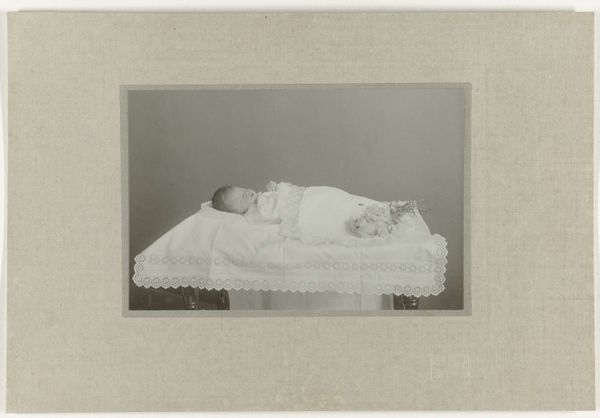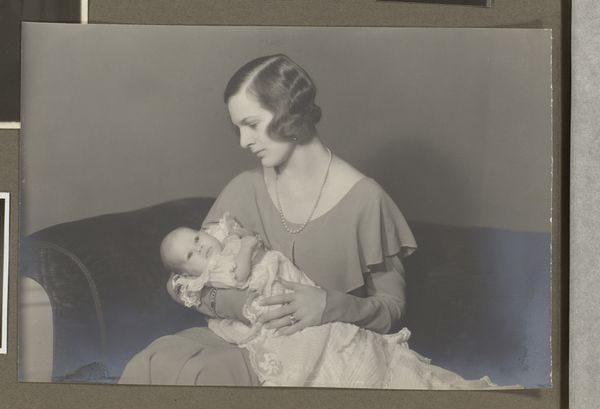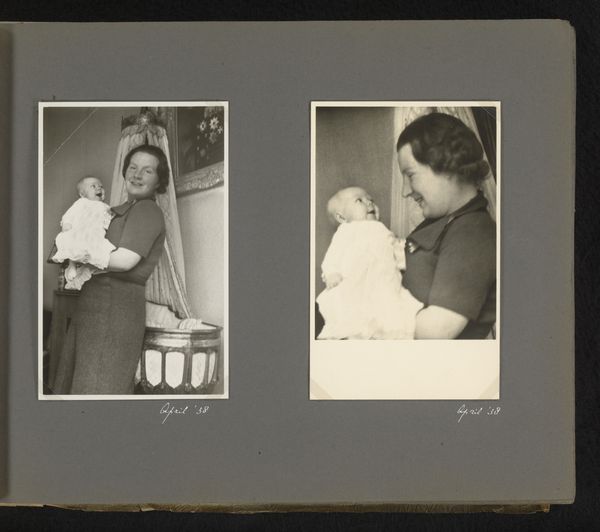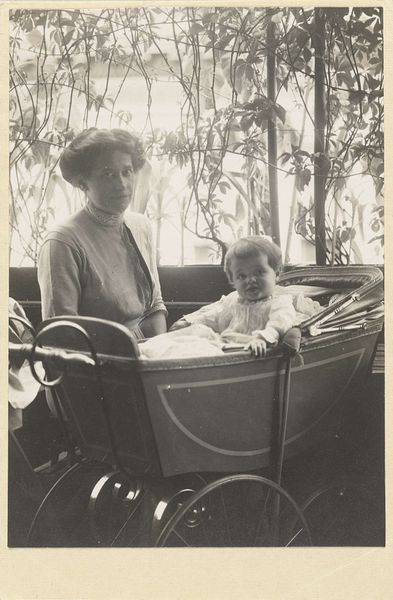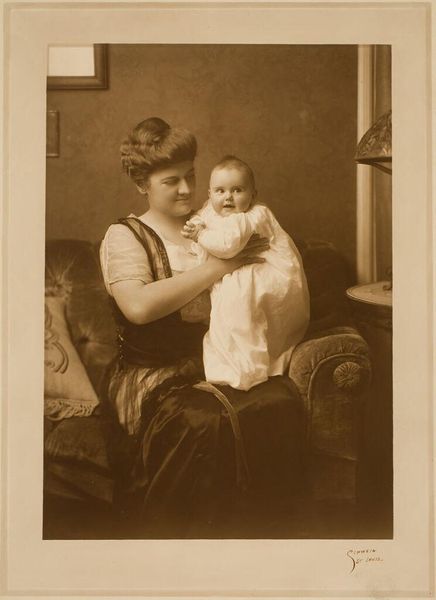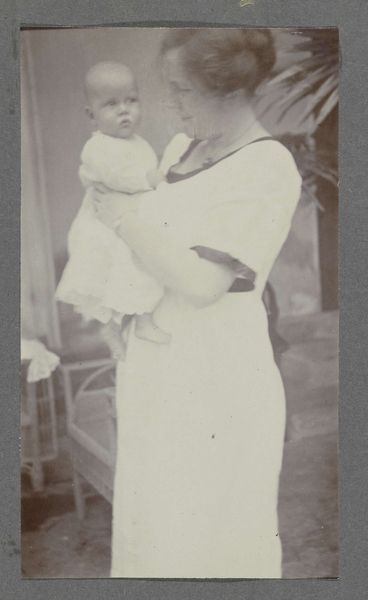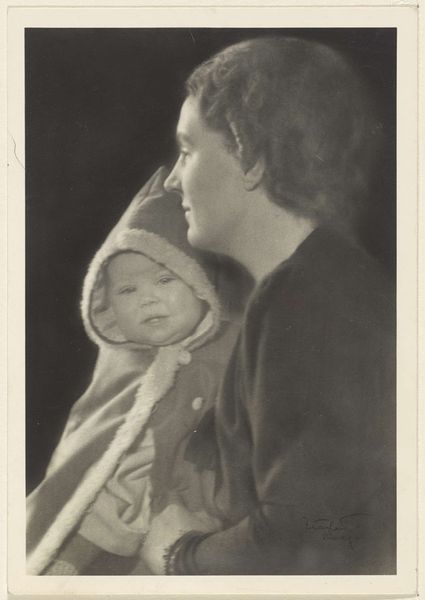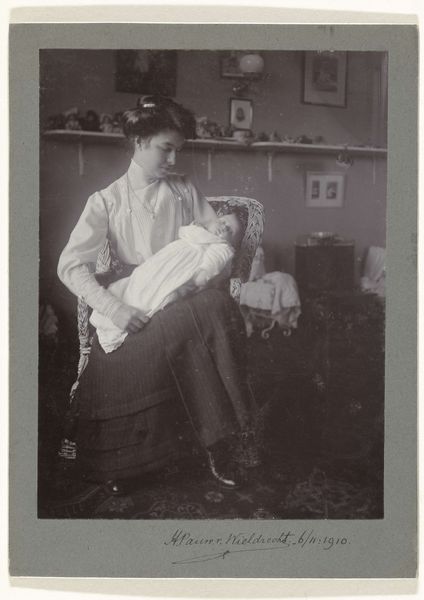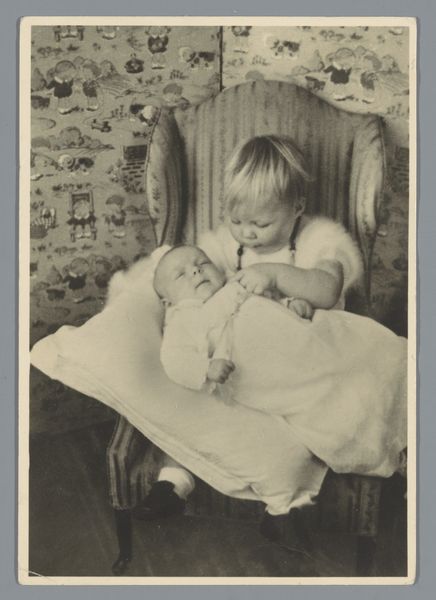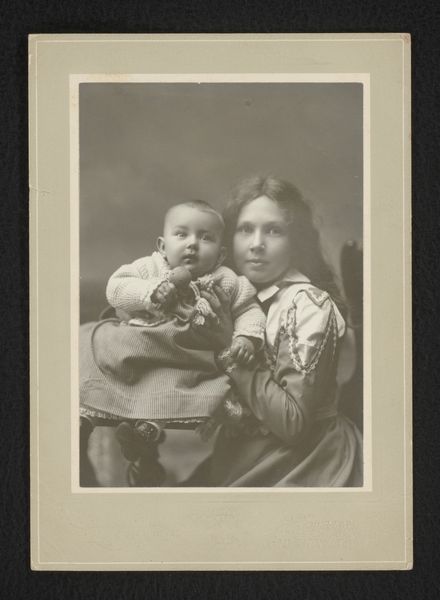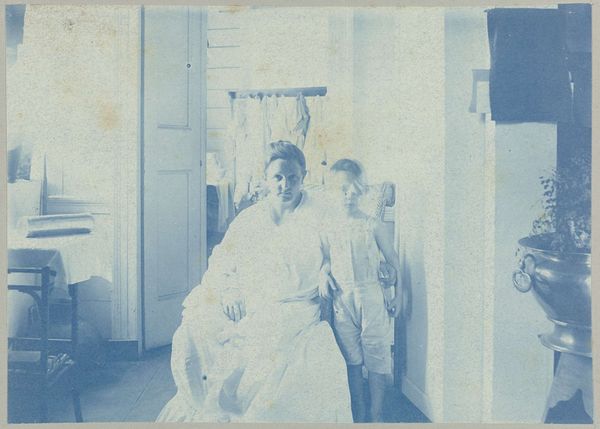
Dimensions: height 301 mm, width 251 mm
Copyright: Rijks Museum: Open Domain
Editor: So, here we have Louis Fleckenstein’s "Nursing Mother," a gelatin-silver print from 1900. I’m immediately struck by the intimacy, the close focus... It feels so personal. What stands out to you? Curator: The symbolism is layered here. Beyond the obvious depiction of maternal love, consider the historical context. Photography at the turn of the century was still finding its artistic voice. Representing motherhood like this, within the domestic sphere, reinforces deeply embedded cultural narratives. Editor: Narratives? You mean like… what society expected of women? Curator: Precisely. The woman is anonymous, her face obscured, making her almost an archetypal mother, her identity subsumed by her role. The very act of nursing becomes symbolic of nourishment, protection, and continuity, concepts deeply rooted in our collective unconscious. Editor: That’s interesting, the idea of continuity. It's more than just a mother and child, but a representation of womanhood across generations. But do you think focusing on symbolism risks overlooking the human element, the genuine connection captured in the photo? Curator: Not at all. The power of symbols lies in their ability to resonate on a personal level. We respond to them because they touch upon universal human experiences. The draped cloth, for example – does it remind you of any religious iconography? Editor: Actually, it kind of reminds me of images of Madonna and Child, almost reverential. Curator: See how the symbolism enriches, rather than detracts, from the emotional impact? What did you learn while examining this photo? Editor: How Fleckenstein used cultural codes to express not just a realistic mother/child connection but also a cultural understanding of womanhood.
Comments
No comments
Be the first to comment and join the conversation on the ultimate creative platform.

